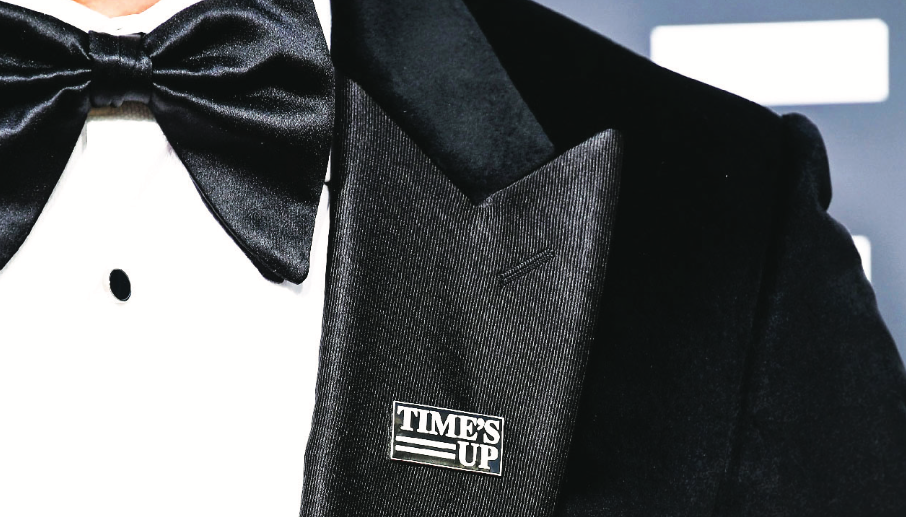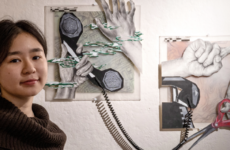
The all-black dress code that stars adopted for the Golden Globes was as a sign of solidarity with abuse victims through the Time’s Up initiative.
The 75th Annual Golden Globes were the first Sunday of January. It was the biggest gathering of the Hollywood establishment since both the accusations against Harvey Weinstein and the #MeToo movement, which started in 2006, gained increased notoriety a few months ago. One of the most memorable parts of the evening was the fashion on the red carpet. Actresses and actors decided to dress in black to show solidarity with victims of sexual misconduct. Just as suffragettes and feminists before them, the women and men of the Golden Globes used fashion to propel the recent anti-harassment movements in Hollywood.
The Time’s Up campaign did most of the organizing behind the red carpet blackout. Time’s Up is a campaign against sexual harassment and inequality that focuses mostly on legal aspects of the movement, but it is also about raising awareness. It is a part of the broader #MeToo movement. Time’s Up not only coordinated the actors black attire, but also made a Time’s Up button. This small black and white pin was designed by Adrianne Phillip, Reese Witherspoon’s costume designer and stylist. The buttons carried the organization’s name and were meant to be worn like the blue ACLU ribbons at the Oscars last year. These pins were a way to signal support and solidarity with the movement.
All throughout the evening people discussed why they wore black or wore these pins. Reese Witherspoon, who has been a leader in the Time’s Up movement, put it beautifully when she told the New York Times, “We have been siloed off from each other. We’re finally hearing each other, and seeing each other, and now locking arms in solidarity with each other, and in solidarity for every woman who doesn’t feel seen, to be finally heard.” Actress Connie Britton told CNN her vision for the movement, “What we really need to do now is get to the grassroots and get to everyday women who have been dealing with these issues and have to sit alone with it and don’t have the resources to empower themselves. For me, my hope is that we really get to a place with this movement where it’s not just about Hollywood.”
There was some criticism regarding the choice to dress in black to make a statement. A main point of criticism was around the passiveness of using fashion as a form of activism. The problem of sexual harassment has been perpetuated by silence, so some people took issue with using a silent form of protest because it seemed too consistent with the cultural mandate for women to be quiet and passive. The choice of the color black was also a point of controversy. Some said that black seems sad, which is unfitting for a time that should be empowering and motivating. Another point of controversy was that most men already wear black, so some thought it might not be appropriate as a lot of this movement is about female independence, not doing as the men do.
Though it was not without its criticism, the majority of people have had very positive reactions to this fashion movement. Fashion is one of the greatest tools for social change. In movements from suffrage to civil rights to gay rights, fashion is not only a tool that conveys powerful and deep messages effectively but is also accessible and inclusive. We see this again with the Golden Globes this year.
Wearing black at the Golden Globes has widely been seen as a success because it has drawn attention to the issue of sexual harassment in a way more people feel they can understand. Talking about sexual harassment is scary and hard, but talking about clothes isn’t, and that is what has made fashion such a powerful political tactic. Clothes at the Golden Globes this year has had a huge cultural effect both in terms of the way we think about sexual harassment and the #MeToo movement and how much we think about them.




